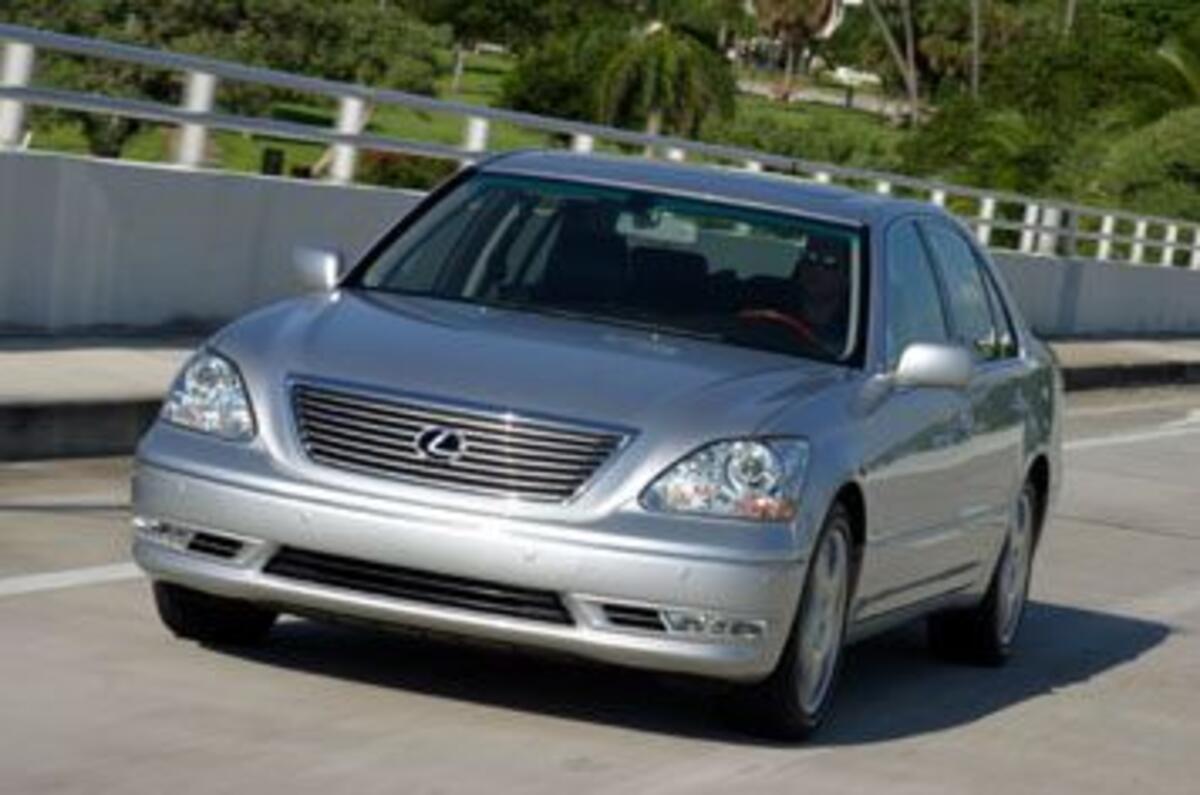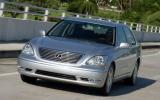Life is cut-throat in the luxury car market. When Lexus pulled the wraps off its third-generation LS430 flagship back in 2000, there were no iDriven 745i BMWs, no aluminium-bodied Jag XJs and no new-generation Audi A8s. The LS wooed buyers with its silkiness, its space, and a list of standard gear as long as your arm.
But now the opposition has caught up and moved on. So for its mid-cycle facelift model, which lands in UK showrooms in November, Lexus has been sweating the details and filling in the gaps in an attempt to stay fresh against this new generation of European mega-saloons.
Like the 745i and new XJ, the LS has traded the five speeds in its auto transmission for six; sharpened up its sheetmetal; added even more electronic gizmos and safety features; and tried to shed its dull-driver image with the addition of tighter suspension, a sequential-style gear shifter, and optional 18-inch, low-profile rubberware.
Not that anyone at the golf club is going to recognise the latest LS as a new model; styling changes are subtle at best. Up front there’s a bonnet with sharper creases, a bigger bumper with a re-shaped spoiler, and new headlights with ‘swivelling’ low beams that light the car’s path around corners.
At the rear, the twin exhausts now poke out of the bumper to announce to the world there really is a V8 up front, plus there are new rear lights with LEDs for quicker brake light illumination. As we said, subtle.
But the substance behind the style comes with the new six-speed auto, with self-shif override for the first time. It’s an Aisin-Warner design, as opposed to the ZF ’box that’s used in the Jag and 7-series, and gives a much-needed lower first gear for zippier off-the-line acceleration, with the other five ratios stacked closer for better mid-range response.
Now when you nail the throttle, there’s more urgency in the way this almost-two-tonne luxury barge launches off the line. According to Lexus figures, the 0-60mph sprint is dispatched in 5.9 seconds, as opposed to 6.3 seconds with the previous five-speeder. The new transmission is intuitive and super-responsive to calls for kick-down, and still sets the benchmark when it comes to oily-smooth changes.
Lexus is well aware that the LS doesn’t exude the sportiest of images, so it has fiddled with the suspension. Engineers have also stiffened the main steering shaft and re-designed the power-steering gear in a bid to provide more feedback to the driver.
Couple these changes with the bigger 18-inch wheels shod with 245/45R-18 W-rated rubber fitted to our Euro-spec ‘Sport Package’ test car, and the LS should be more fun to drive. But all the changes seem to have succeeded in doing is making the previously superb ride a little more brittle and fidgety.
And, as before, when you push the car hard into a tightish bend, there’s plenty of roll and safe, steady, stabilising understeer. This is no new XJ, or 745i. But, the Lexus is unwilling to compromise its luxury limo roots in order to become a more focused driver’s car. And, for most buyers, that’s just fine.
Keeping those inside safe is an even greater priority with the new LS. There’s a new Pre-Collision System available from early 2004. It uses a radar sensor located behind a clear plastic square on the grille to determine the distance between the LS and objects ahead. If it senses that a brick wall is coming up a little too fast and a big bang is imminent, it automatically tightens the front seatbelts, switches the air suspension to ‘sport mode’ to reduce nose dive, and triggers Brake Assist to give maximum braking.









Add your comment